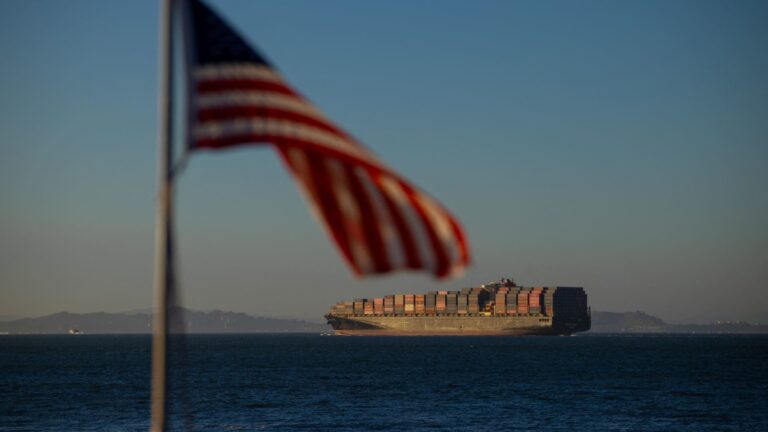A cargo ship full of shipping containers departs the port of Oakland at the San Francisco Bay, California, U.S., August 4, 2025.
Carlos Barria | Cb
With both the producer price index and the consumer price index still showing accelerations, consumers may be wondering why the price of goods across the board isn’t increasing more.
But logistics experts are warning that those higher prices are currently hiding in “the middle mile,” otherwise known as warehouses and distribution centers, and are yet to come.
The Trump administration‘s back-and-forth on tariffs has had U.S. importers scrambling to pull forward their freight to mitigate those rates, with that inventory now sitting in warehouses.
Zachary Rogers, lead author of the Logistics Managers’ Index and assistant professor of supply chain management at Colorado State University, explained during the Port of Los Angeles July news update that the increase in inventory is the reason why price increases related to the tariffs have not been seen across the board.
“We are seeing price increases right now in back-to-school kids’ apparel, toys, and things like that,” said Rogers. “But consumers haven’t seen the really big impact of any inflation yet because it is sitting in the middle mile (warehouses). I would expect that we will see inventories move down in September.”
Rogers said retailer inventories generally peak in the middle of October, but with the front-loading this year, warehouse capacity has moderately expanded as well as prices.
“Essentially, what this is telling us is peak season is happening in sort of a bifurcated way,” said Rogers.

Mike Short, president of global forwarding at C.H. Robinson, told CNBC that peak season items, which will make their way onto store shelves for the holidays, were pushed two to three months earlier this year and are being stored. Comparing this peak season to last year, however, volumes are not as strong.
“We’ve seen customers that are actually having to bring that inventory into their own distribution centers, and they’re actually having to have to carry that cost,” said Short. “But whether that (warehouse costs) gets passed on to the end consumer or not, is really spread across the board, and that also goes with tariffs, carrying costs. It’s really across the board on what our customers are deciding to do.”
Short said they are having active conversations with clients on how to manage their inventory and bring in their freight in a timely and efficient manner.
“We’ve seen with our customers is, instead of the supply chain expense being a line item in their P and L (profit and loss statement), it’s becoming a boardroom C-level conversation,” said Short.
The pulling forward of freight may have been a mitigation tool to avoid higher tariffs, but warehouse space has gotten tighter as a result, which has also increased prices..
Karl Siebrecht, CEO of flexible warehouse firm Flexe, said that across the company’s enterprise and mid-market customers, they are seeing…
Read More: Tariff-driven price hikes may be hidden by products stuck in ‘the middle



